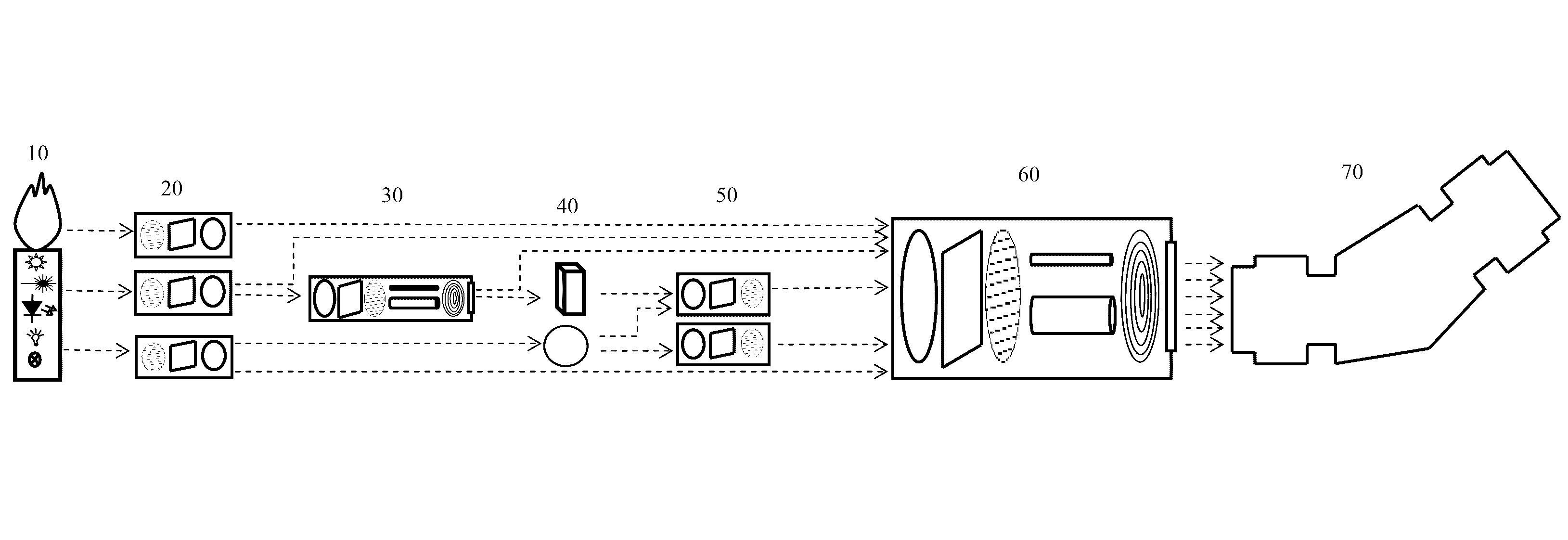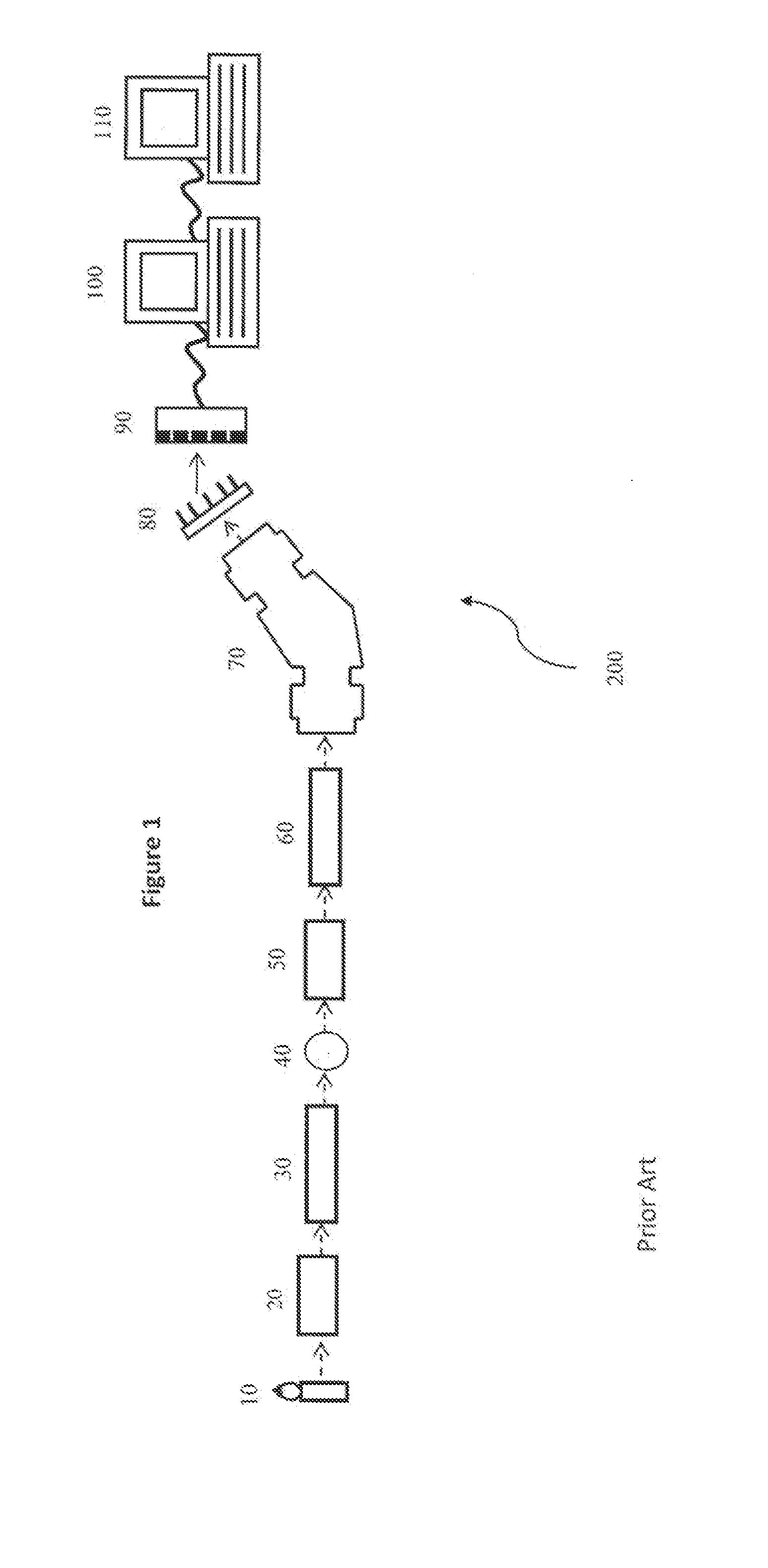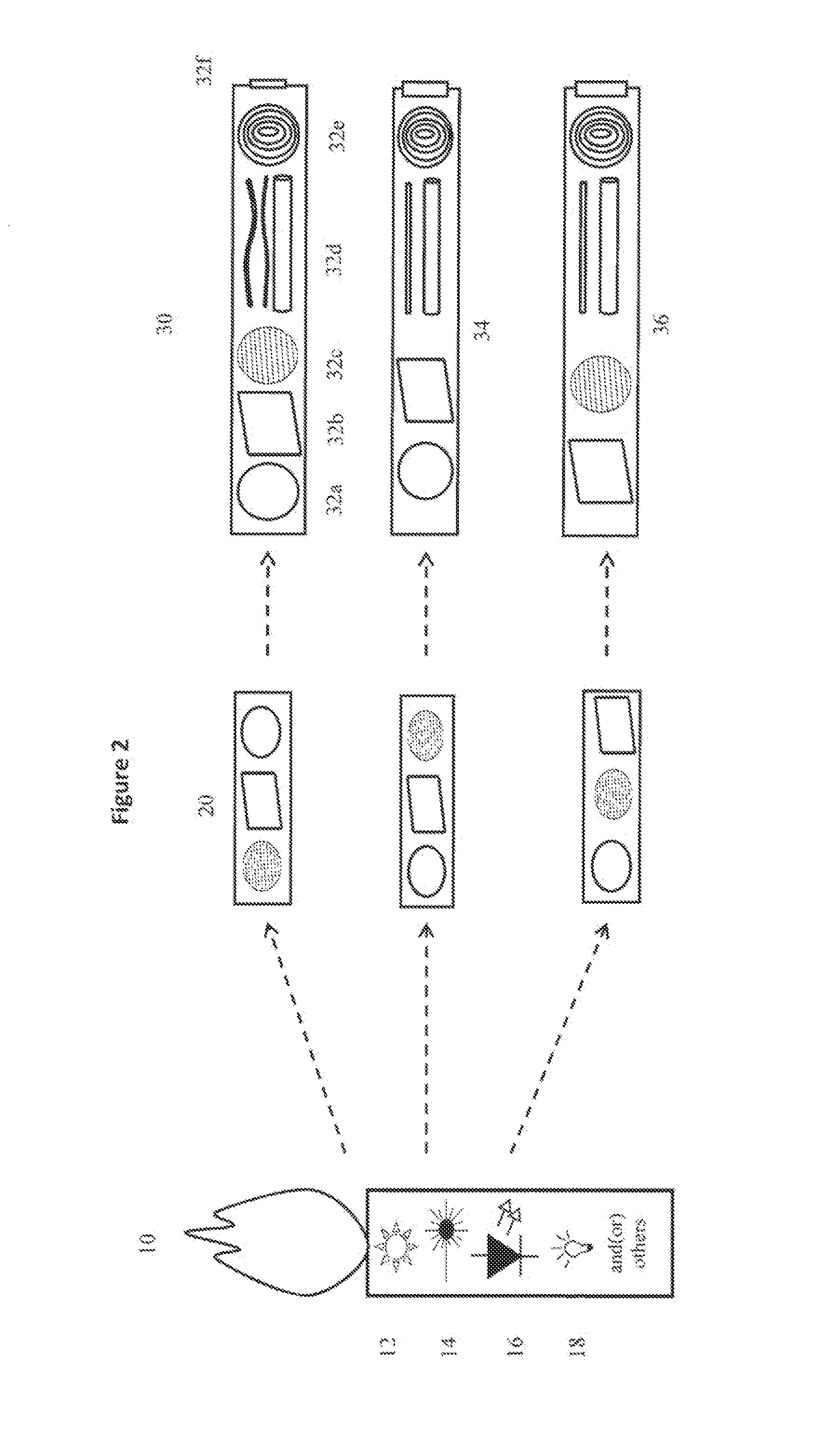Apparatus and method for optimizing data capture and data correction for spectroscopic analysis
a spectroscopic analysis and data capture technology, applied in the field of apparatus and methods for optimizing data capture for spectroscopic analysis, can solve the problems of increasing measurement time, deteriorating efficiency of these instruments, and inefficient systems for light collection, so as to increase the accuracy of a spectrometer system and increase the accuracy
- Summary
- Abstract
- Description
- Claims
- Application Information
AI Technical Summary
Benefits of technology
Problems solved by technology
Method used
Image
Examples
Embodiment Construction
[0087]The following description is of a preferred embodiment.
[0088]A method for generating, collecting, monitoring and pre-processing electronic data in a two-dimensional matrix which corresponds to spatial and spectral distribution of signal, for the purposes of spectroscopic analysis is provided herein.
[0089]With reference to FIG. 1, there is shown a typically spectrometer system 200 comprising a source of EM radiation 10, for example but not limited to an external light source. Radiation from the EM source 10 is collected using a source light collector (SLC; 20). The collected light is transformed into a spatial light distribution that is optimal for sample illumination, for example structured illumination light, that is produced using an illumination light structuring component (ILSC; 30). Interaction of the structured illumination light with the sample 40 produces light that contains information about the composition of the sample which is then analyzed spectrally. The light fr...
PUM
 Login to View More
Login to View More Abstract
Description
Claims
Application Information
 Login to View More
Login to View More - R&D
- Intellectual Property
- Life Sciences
- Materials
- Tech Scout
- Unparalleled Data Quality
- Higher Quality Content
- 60% Fewer Hallucinations
Browse by: Latest US Patents, China's latest patents, Technical Efficacy Thesaurus, Application Domain, Technology Topic, Popular Technical Reports.
© 2025 PatSnap. All rights reserved.Legal|Privacy policy|Modern Slavery Act Transparency Statement|Sitemap|About US| Contact US: help@patsnap.com



